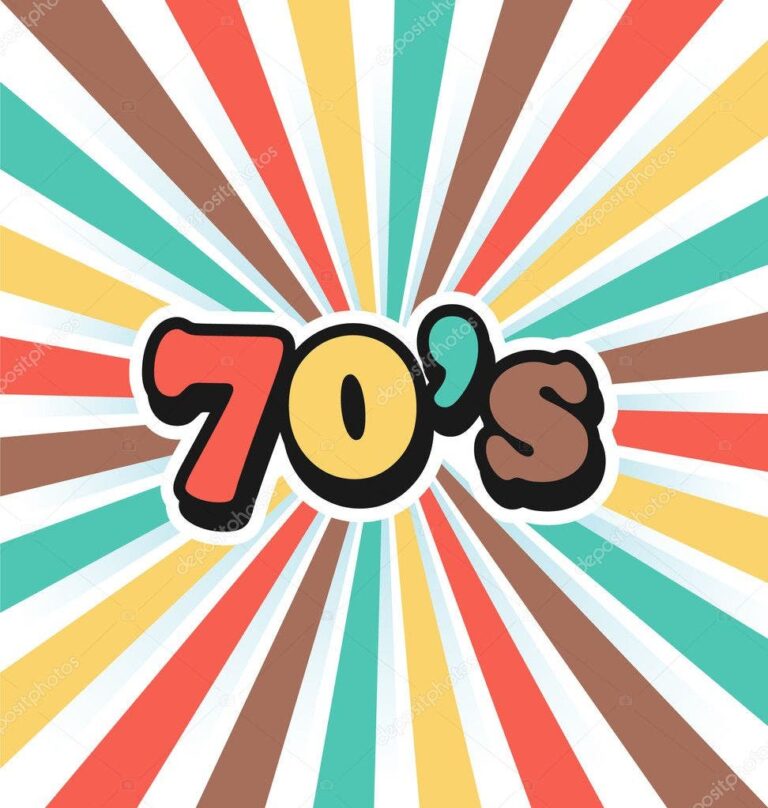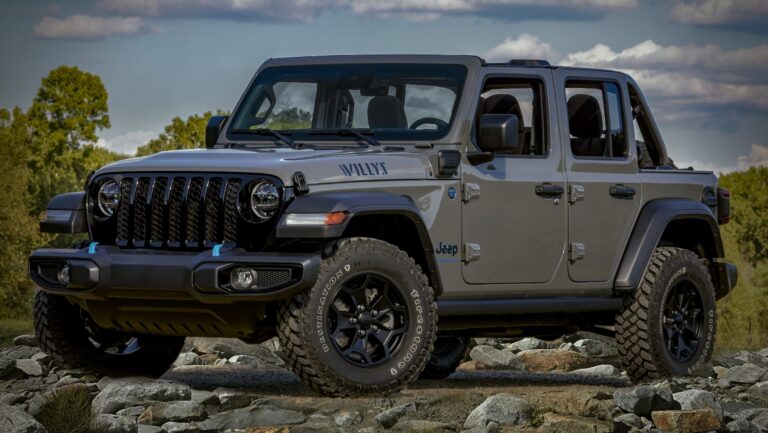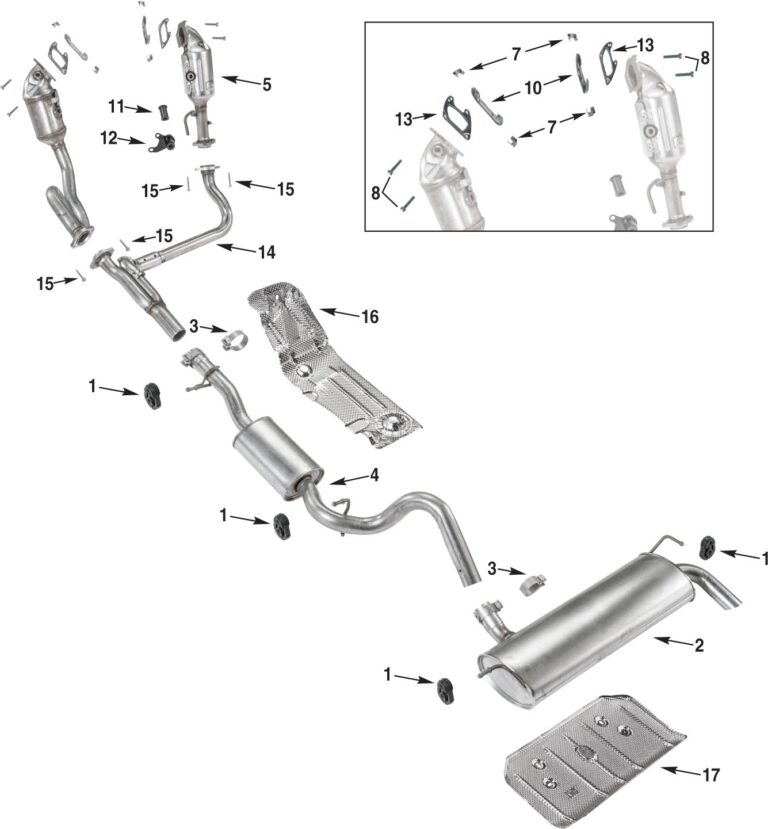Jeep TJ Frame For Sale: Breathing New Life into an Off-Road Icon
Jeep TJ Frame For Sale: Breathing New Life into an Off-Road Icon jeeps.truckstrend.com
The Jeep Wrangler TJ (1997-2006) holds a special place in the hearts of off-road enthusiasts. Renowned for its robust coil-spring suspension, classic styling, and legendary off-road capability, the TJ remains a highly sought-after platform for adventures and customization. However, like any vehicle from its era, the TJ has a common Achilles’ heel: its frame. Over decades of exposure to road salt, mud, water, and the stresses of off-roading, the factory frame is highly susceptible to rust, corrosion, and, in severe cases, structural compromise.
This is where the market for "Jeep TJ Frame For Sale" becomes incredibly important. Whether your beloved TJ is suffering from severe rust, has sustained accident damage, or you’re embarking on an ambitious custom build, a replacement frame can be the difference between retiring your trusty Jeep and giving it a complete, revitalizing overhaul. This comprehensive guide will delve into every aspect of acquiring a Jeep TJ frame, from understanding why you might need one to the practicalities of inspection, purchase, and the demanding process of a frame swap.
Jeep TJ Frame For Sale: Breathing New Life into an Off-Road Icon
Why Consider a Replacement Jeep TJ Frame?
Before diving into the "how-to," it’s crucial to understand the driving forces behind the demand for replacement TJ frames. It’s rarely a cosmetic decision; rather, it’s a structural necessity for safety and longevity.
-
The Scourge of Rust: This is, by far, the most prevalent reason. TJ frames are C-channel designs, meaning they are open on one side. This design, combined with inadequate internal rustproofing from the factory, allows road salt, dirt, and moisture to accumulate inside the frame rails. Common rust-out points include:
- The areas around the control arm mounts (upper and lower, front and rear).
- The skid plate mounting points, especially where the transmission/transfer case skid attaches.
- The steering box mounting area on the driver’s side front frame rail.
- The rear spring buckets and bumper mounts.
- Anywhere drain holes become clogged, trapping moisture.
Severe rust compromises the frame’s integrity, leading to dangerous cracks, bends, or even complete failure.


-
Accident Damage: Collisions, even minor ones, can bend, twist, or crack a TJ frame. A compromised frame affects steering alignment, suspension geometry, and overall vehicle safety. While some minor damage can be repaired by a specialized frame shop, extensive damage often makes a full frame replacement the safer and more cost-effective option.
-
Custom Builds and Restorations: For enthusiasts looking to build a "new" TJ from the ground up, starting with a clean, unmolested frame is ideal. This allows for precision in mounting new components, welding on custom brackets, or applying specialized coatings without the hassle of dealing with decades of grime and rust. It’s the ultimate foundation for a dream build.
-
Salvage Titles or Reconstructive Builds: Sometimes, a TJ with a perfectly good body, engine, and axles might be "totaled" by an insurance company due to frame damage. Acquiring such a vehicle and swapping the frame can be an economical way to get into a capable off-roader, provided local regulations allow for VIN reassignment or branding.
-
Cost-Effectiveness vs. Repair: While frame repair is possible for localized damage, extensive rust remediation and structural welding can quickly become more expensive than sourcing a good used or new replacement frame. A full frame swap ensures a solid foundation for years to come.

Types of Jeep TJ Frames Available for Sale
The market offers several categories of TJ frames, each with its own advantages, disadvantages, and price point. Understanding these options is key to making an informed decision.
-
Used/Salvaged Frames:
- Description: These are frames pulled from donor TJs, often from salvage yards or private sellers. They are the most common and generally the cheapest option.
- Pros: Most affordable, readily available.
- Cons: Condition varies wildly. Can still have hidden rust, minor bends, or previous amateur repairs. Requires meticulous inspection. Shipping can be costly.
- Best For: Budget-conscious buyers willing to put in the work to clean, inspect, and potentially repair minor issues.
-
Refurbished/Blasted/Coated Frames:
- Description: These are used frames that have undergone a restoration process. They are typically sandblasted to remove all rust and old paint, then primed and coated (e.g., with epoxy primer, bed liner, or paint).
- Pros: Rust-free exterior, clean appearance, ready for assembly. Offers a much better starting point than a raw used frame.
- Cons: More expensive than raw used frames. Still a used frame underneath, so internal rust or hidden structural issues might remain if not thoroughly inspected before blasting.
- Best For: Those who want a cleaner, prepped frame without the cost of a brand-new unit.
-
Aftermarket New Replacement Frames (Bare Steel):
- Description: Brand-new frames fabricated by specialized companies (e.g., Throttle Down Kustoms – TDK, Quadratec, Rusty’s Off-Road, Morris 4×4 Center). These are typically made from thicker steel than OEM and often feature improved welding or design elements. They come as bare metal.
- Pros: Perfect condition, no rust, often stronger than original, precise dimensions.
- Cons: Significantly more expensive. Requires extensive preparation (grinding, cleaning, coating/painting) before assembly.
- Best For: High-end restorations, custom builds, or those seeking the absolute strongest foundation.
-
Aftermarket New Replacement Frames (Coated/Galvanized):
- Description: Similar to the bare steel new frames but come pre-coated from the factory (e.g., powder-coated, e-coated, or hot-dip galvanized). Galvanized frames offer superior long-term rust protection by chemically bonding a zinc layer to the steel.
- Pros: Ready for assembly (or nearly so), ultimate rust protection (galvanized), often come with warranties.
- Cons: The most expensive option. Galvanized frames have a distinct look that some may not prefer.
- Best For: Owners in rust-prone regions, those who plan to keep their TJ for decades, or anyone who wants the best possible foundation with minimal initial prep work.
Key Considerations When Buying a Jeep TJ Frame
Purchasing a frame is a significant investment in time and money. Careful consideration is paramount.
- Thorough Inspection is Non-Negotiable:
- Rust: Use a flashlight to inspect inside the C-channel frame rails. Look for flaky, bubbling, or penetrating rust, especially in common problem areas (control arm mounts, steering box, skid plate mounts, rear sections). Tap with a small hammer to check for thin spots.
- Bends/Twists: Use a straight edge or string line to check for straightness. Look for any signs of buckling, creasing, or unevenness, which indicate collision damage.
- Cracks/Repairs: Inspect all welds and stress points for cracks. Be wary of amateur welds or thick layers of undercoating that might hide damage.
- Drain Holes: Ensure drain holes are clear and not rusted shut.
- Source Reputability: Buy from reputable salvage yards, specialized Jeep parts suppliers, or well-known aftermarket frame manufacturers. Private sellers require extra vigilance.
- Shipping and Logistics: Frames are large and heavy. Freight shipping can be expensive, often ranging from $300 to over $1000 depending on distance. Factor this into your budget. Local pickup is always ideal.
- Compatibility: While TJ frames (1997-2006) are generally interchangeable, minor differences can exist between early (97-02) and late (03-06) models, particularly regarding fuel tank skid plate mounting and transmission crossmember positions for certain automatic transmissions. Most aftermarket frames are designed to accommodate all TJ years.
- Legalities and VIN: If you’re swapping a frame, understand your state’s laws regarding VIN plates. The VIN is typically stamped on the frame (driver’s side, near the steering box). Some states require a VIN inspection or a new "reconstructed" title after a frame swap. Always verify.
The Frame Swap Process: A General Overview
A Jeep TJ frame swap is not for the faint of heart. It is a highly involved mechanical project that demands significant skill, specialized tools, and ample space.
- Preparation: Acquire a factory service manual. Gather all necessary tools (engine hoist, jack stands, air tools, wrenches, sockets, cutting tools, potentially a welder). Label and bag every bolt, wire, and component. Take countless photos and videos.
- Disassembly: This is the most time-consuming part. The entire vehicle must be dismantled from the frame. This includes:
- Removing the body (often requiring a lift or multiple strong friends).
- Disconnecting and removing the engine, transmission, and transfer case.
- Removing both front and rear axle assemblies, including suspension components (control arms, shocks, springs).
- Disconnecting all brake lines, fuel lines, wiring harnesses, and steering components.
- Removing the fuel tank, skid plates, and exhaust system.
- Frame Preparation: If you bought a used or bare new frame, this involves thorough cleaning, grinding, rust treatment, priming, and painting/coating. Ensure all mounting points are clean and ready.
- Reassembly: The reverse of disassembly. This requires meticulous attention to detail, proper torque specifications, and often new hardware (bolts, bushings, mounts) as old ones are usually rusted or worn. Key steps include:
- Mounting the axles and suspension.
- Installing the engine, transmission, and transfer case.
- Reconnecting all lines (brake, fuel, vacuum) and wiring harnesses.
- Carefully lowering and aligning the body onto the new frame.
- Reinstalling the steering column, interior components, and exterior accessories.
- Post-Swap Checks: Bleed the brakes, check all fluid levels, ensure all electrical systems function, and get a professional alignment. Test drive carefully.
Challenges: Rusted and seized bolts are common. Managing the weight of the body and drivetrain requires proper lifting equipment. Reconnecting complex wiring harnesses and ensuring proper routing of lines can be tricky. This is a project that often benefits from professional assistance or at least experienced supervision.
Practical Advice and Actionable Insights
- Assess Your Skills Realistically: If you’re not an experienced mechanic with a well-equipped garage, consider hiring a reputable shop for the swap. It will save you immense frustration and potentially costly mistakes.
- Budget Beyond the Frame: Factor in shipping, new hardware (bolts, nuts, washers), new body mounts, suspension bushings, brake lines, fuel lines, and potentially new fluids. These add up quickly.
- Don’t Rush the Inspection: If buying a used frame, dedicate ample time to a thorough, hands-on inspection. If buying remotely, demand high-resolution photos and videos from multiple angles.
- Consider Your TJ’s Future: If the rest of your Jeep is in rough shape, a frame swap might be overkill. However, if your engine, transmission, axles, and body are solid, a new frame can extend its life by decades.
- Join Forums and Groups: Online Jeep TJ forums and Facebook groups are invaluable resources for advice, tips, and even finding frames for sale.
Jeep TJ Frame For Sale: Estimated Price Guide
Prices for Jeep TJ frames can vary significantly based on condition, type, seller, and geographical location. This table provides a general estimate.
| Frame Type | Condition/Features | Estimated Price Range (USD) | Notes |
|---|---|---|---|
| Used/Salvaged Frame | Visible surface rust, no major bends/cracks, good VIN | $500 – $1,500 | Most common & cheapest. Requires thorough inspection. Rust remediation often needed. Shipping can be significant. Local pick-up preferred. Prices vary by region (rust belt vs. dry climates). |
| Refurbished/Blasted/Coated | Rust-free, sandblasted, primed, painted/powder-coated | $1,500 – $3,000 | Mid-range option. Offers a cleaner starting point. Still a used frame underneath. Verify quality of coating. |
| Aftermarket New Frame (Raw) | Brand new steel, bare metal, weld-on mounts | $3,000 – $4,500 | Premium option. Requires prep, painting/coating. Often stronger than OEM. Some assembly (welding) may be required for certain mounts. |
| Aftermarket New Frame (Coated) | Brand new steel, pre-coated (e.g., powder-coated, e-coated) | $4,000 – $5,500 | Top-tier convenience. Ready for assembly. Check coating warranty. |
| Aftermarket New Frame (Galvanized) | Brand new steel, hot-dip galvanized | $5,000 – $6,500+ | Ultimate rust protection. Distinct appearance. Very durable for harsh environments. Often comes with a premium price tag. |
| Additional Costs | Shipping/Freight (avg.) | $300 – $1,000+ | Varies greatly by distance and carrier. Can be a significant portion of the total cost. |
| New Hardware/Bushings/Mounts | $200 – $800+ | Essential for a proper swap. Don’t reuse old, rusty bolts. | |
| Professional Installation (if outsourced) | $2,000 – $5,000+ | Highly variable based on shop rates, complexity, and additional work required. |
Frequently Asked Questions (FAQ) about Jeep TJ Frames
Q1: Why are Jeep TJ frames so prone to rust?
A1: TJ frames are designed with an open C-channel, which allows dirt, moisture, and road salt to enter and accumulate inside. Without adequate internal rustproofing from the factory, these trapped elements lead to accelerated corrosion from the inside out.
Q2: Can I legally swap a frame in my state?
A2: Frame swap legality varies by state and country. Most jurisdictions permit it but require a state inspection, and potentially VIN reassignment or a "reconstructed" title for the vehicle. Always check with your local Department of Motor Vehicles (DMV) or equivalent authority beforehand.
Q3: Is a frame swap a DIY project for a beginner?
A3: No. A frame swap is an advanced mechanical project requiring significant tools, space, and experience. It involves disassembling nearly the entire vehicle. While possible for a highly determined DIYer with strong mechanical aptitude, it’s generally recommended for experienced mechanics or professionals.
Q4: How long does a frame swap typically take?
A4: For an experienced shop, a frame swap can take 40-80 labor hours, plus any time for unforeseen issues. For a DIY enthusiast working on weekends, it could easily span several weeks or even months.
Q5: What’s better: repairing my old frame or buying a new one?
A5: It depends on the extent of the damage. Minor, localized rust or small cracks might be repairable by a certified welder. However, extensive rust, multiple weak spots, or significant bending/twisting usually makes a full frame replacement the safer, more durable, and often more cost-effective long-term solution.
Q6: Do I need to buy a frame for my specific year TJ (e.g., 2000 vs. 2005)?
A6: Jeep TJ frames (1997-2006) are largely interchangeable. However, there can be minor differences, such as fuel tank skid plate bolt patterns or transmission crossmember locations for specific automatic transmissions. Most aftermarket frames are designed to be universally compatible or offer options for these minor variations. Always confirm with the seller.
Q7: How do I thoroughly inspect a frame for damage before buying?
A7: Bring a bright flashlight to inspect inside the frame rails, a small hammer to tap for thin spots, and a magnet to check for body filler (which could hide rust or repairs). Look for any signs of bends, twists, cracks, or excessive rust, particularly around common problem areas like control arm mounts, the steering box, and spring perches. Ask for detailed photos and videos if buying remotely.
Q8: Are galvanized frames worth the extra cost?
A8: If you live in a rust-prone region (e.g., areas that use road salt) or intend to keep your Jeep TJ for many years to come, a hot-dip galvanized frame is an excellent investment. It offers superior, long-lasting rust protection, significantly extending the life of your vehicle’s foundation.
Conclusion
The Jeep TJ frame is the unsung hero beneath its iconic body, and its integrity is paramount to the vehicle’s safety, performance, and longevity. For many TJ owners, facing a rusted or damaged frame can feel like a death sentence for their beloved off-roader. However, the robust market for "Jeep TJ Frame For Sale" offers a viable and often superior alternative to costly, temporary repairs.
Whether you opt for a carefully inspected used frame, a prepped refurbished unit, or a brand-new, stronger aftermarket option, investing in a solid foundation can breathe decades of new life into your Jeep. While a frame swap is a challenging endeavor, the reward of a structurally sound, capable, and revitalized TJ is immeasurable. With careful research, realistic budgeting, and perhaps a little professional help, your classic Jeep TJ can continue to conquer trails and turn heads for years to come.






